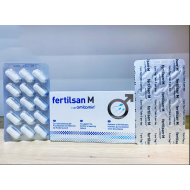
- Stock: In Stock
- Brand: Acme Laboratories Limited
- Product ID: Tetracycline Hydrochloride
100% Secure Payment

A Tetra 1%
DESCRIPTION
A-TETRA (Tetracycline) is a semi-synthetic Tetracycline produced from Chlortetracycline. It is an antibiotic isolated from Streptomyces aureo-faciens. It is a broad spectrum antibiotic which is active against a wide range of Gram-negative and Gram-positive bacteria. Tetracycline has its main mechanism of action on protein synthesis, and an energy-dependent active transport system pumps the drug through the inner cytoplasmic membrane of the bacteria. Once inside the bacterial cell, Tetracycline inhibits protein synthesis by binding specifically to 30S ribosome. The drug appears to prevent access of aminoacyl tRNA to the acceptor site on the mRNA-ribosome complex. This prevents the addition of amino acid to the growing peptide chain.
COMPOSITION
Capsule : Each capsule contains Tetracycline Hydrochloride BP 500 mg.
Tablet : Each tablet contains Tetracycline Hydrochloride BP 500 mg.
INDICATIONS
A-TETRA is a bacteriostatic antibiotic with a broad spectrum of activity against bacteria, and also has some anti-protozoal activities. It remains the choice in the treatment of Chlamydia, Rickettsia, Mycoplasma, Brucella and some Spirochaetal infections. A number of Gram-negative and Grampositive pathogens can be treated with Tetracycline. It has been given long term in the management of severe acne.
When Penicillin is contraindicated, the Tetracyclines are alternative drugs in the treatment of infection.
DOSAGE AND ADMINISTRATION
Capsule : The usual dose is 1 to 2 g/day (2-4 capsules) divided in 2 or 4 equal doses depending on the severity of the infection, preferably one hour before or two hours after meals with a glass of water.
Tablet : 1-1/2 tablet (250-500 mg) should be taken after 6 hours. Preferably one hour before or two hours after meal with a glass of water.
OR AS DIRECTED BY THE PHYSICIAN.
SIDE EFFECTS
Common side effects are gastro-intestinal disturbances including nausea, vomiting and diarrhoea. These are common especially with high doses and most are attributed to irritation of the mucosa. Other effects that have been reported are dry mouth, glossitis and discoloration of the tongue,
stomatitis and dyspepsia. Benign intracranial hypertension, pancreatitis and pseudomembranous colitis are reported.
CONTRAINDICATIONS
Tetracycline is contraindicated in patients hypersensitive to any of its group. It should be avoided in patients with systemic lupus erythematosus. It is also contraindicated in severe renal impairment, if given, doses should be reduced.
PRECAUTIONS
Care should be taken if Tetracycline is given to patients with impaired liver function.Potential hepatotoxic drugs including Erythromycin, Chloram-phenicol, Isoniazid, Sulfonamide etc. should not be given concomitantly. The risk of nephrotoxicity may be increased if given with Methoxyflurane or other potentially nephrotoxic medication. Care is advisable in patients with Myasthenia gravis, who may be at risk of neuromuscular blockade.
WARNINGS
The use of Tetracycline hydrochloride during tooth development (last half of pregnancy, infancy and childhood to the age of 8 years) may cause permanent discoloration of the teeth.
DRUG INTERACTIONS
It has been reported that Tetracycline in combination with Methoxyflurane have resulted in nephrotoxicity. Milk and milk products as well as antacids containing calcium, aluminium and magnesium impair the absorption of Tetracycline and resulting decreased serum levels. Tetracycline inhibits the antimicrobial activity of penicillin when used concomitantly.



























%20Pvt.%20Ltd./Movicol-Oral-Powder-190x190.jpg)
